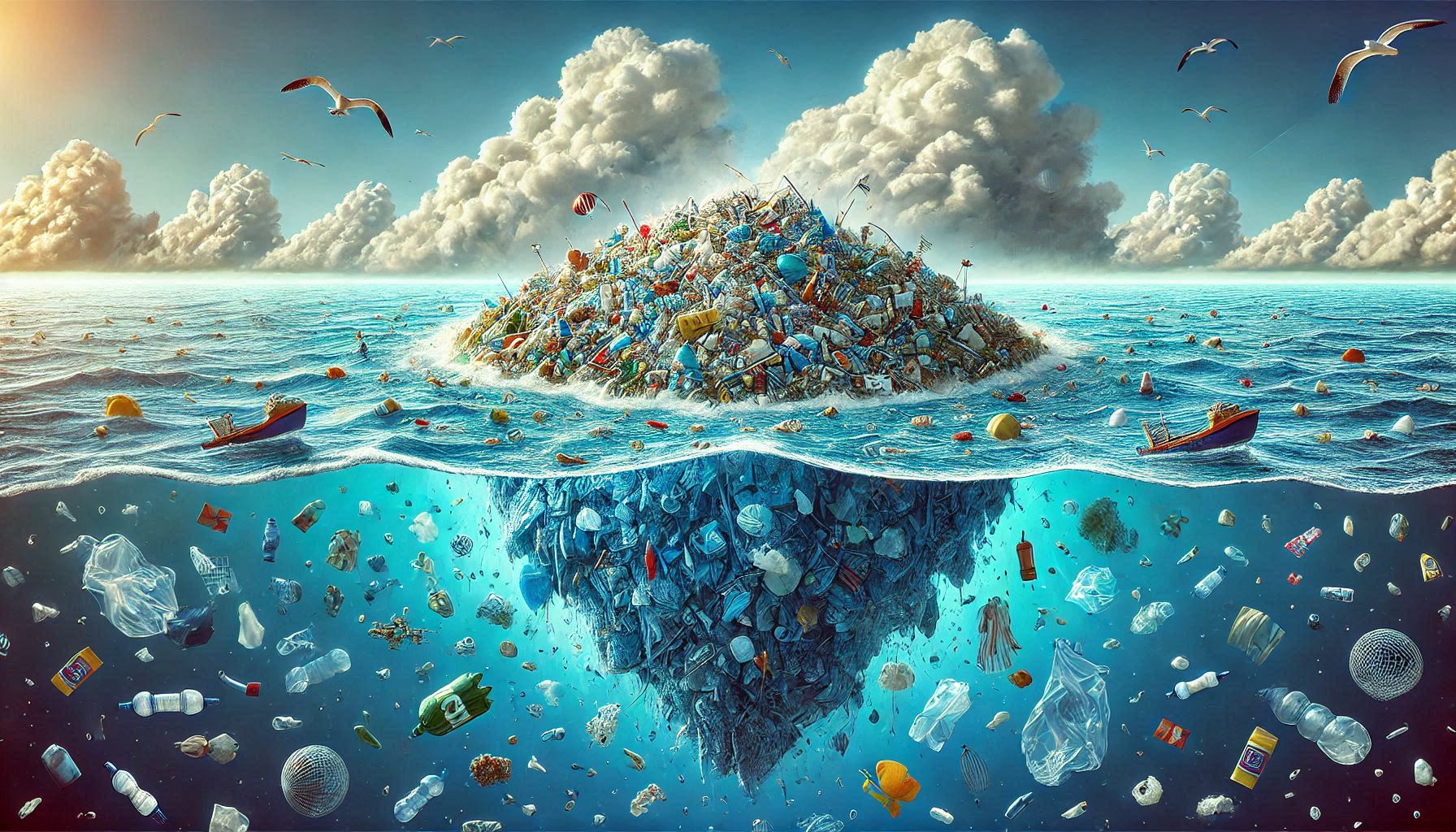The 3 Truth About Ocean Plastic: What We’re Getting Wrong – Misconceptions about ocean plastic, its sources, impacts, and solutions hinder effective action. Learn the reality

The Truth About Ocean Plastic: What We’re Getting Wrong
When we hear “ocean plastic,” our minds often conjure up images of the Great Pacific Garbage Patch — a giant, floating island of trash adrift in the middle of the ocean. This depiction has garnered significant attention and raised awareness of the pressing issue of ocean pollution. However, what we think we know about ocean plastic — its sources, its impacts, and solutions — may be misleading. By delving deeper into the realities of ocean plastic, we can better understand the complexities of this global crisis and what we can do about it.
The Great Pacific Garbage Patch: A Misconception
The Great Pacific Garbage Patch is often depicted as a giant island of plastic, but the reality is far different. The patch is a vast area of dispersed plastic debris composed primarily of microplastics and smaller particles, rather than a large, visible garbage patch. Most plastic is not easily visible and exists as small pieces spread across a vast area. This misconception can lead to a false sense of security, leading people to assume that if they can’t see the trash, it’s not a problem.
Origin of Ocean Plastic: The Role of the Fishing Industry
A significant portion of ocean plastic comes from the fishing industry, not from household waste as is commonly believed. 86% of the large plastic found in the Great Pacific Garbage Patch comes from discarded fishing gear, including nets and traps. This revelation shifts the focus from individual consumer habits to industrial practices that contribute heavily to ocean pollution. Recognizing this can help spur more targeted action to address the real sources of the problem.
2.1 Ghost Fishing: A Continuing Threat
When fishing gear is lost or abandoned, it doesn’t simply disappear; it continues to catch and kill marine life in a phenomenon known as “ghost fishing.” Lost nets and traps can entangle fish, turtles, and other marine animals for years, leading to unnecessary suffering and population declines. This continuing threat highlights the need for improved management and accountability within the fishing industry.
2.2 Ineffective Regulation and Enforcement-:The 3 Truth About Ocean Plastic: What We’re Getting Wrong
Many regions have inadequate regulations regarding the disposal of fishing gear. Although some countries have begun to implement measures to address lost and abandoned fishing gear, enforcement remains weak. Better regulation, improved tracking of fishing gear, and stricter penalties for illegal dumping could significantly reduce the amount of fishing-related plastics entering the ocean.
2.3 Opportunities for Sustainable Fishing Practices
The fishing industry has the potential to adopt more sustainable practices that reduce plastic waste. Innovations such as biodegradable fishing gear, improved gear retrieval programs, and initiatives to encourage responsible fishing can all contribute to reducing marine plastics. Collaboration between environmental organizations and the fishing industry can help promote sustainable practices that protect marine ecosystems while supporting the livelihoods of fishermen.
Recycling: Not the Answer We Hoped
Despite years of advocating recycling as a solution to plastic pollution, the reality is grim. Globally, only about 9% of plastic is recycled. Many items that end up in the ocean are not recyclable due to their physical composition or economic factors. Although recycling plays a role in waste management, it is not the comprehensive solution that many believe. Instead, we should focus on reducing plastic production and use to tackle the root of the problem.
Microplastics: A Hidden Crisis The 3 Truth About Ocean Plastic: What We’re Getting Wrong
Microplastics are tiny plastic particles that result from the degradation of larger plastic items. They are now ubiquitous, found in oceans, waterways, and even the air we breathe. High-income countries are significant contributors to microplastic pollution, whose sources range from synthetic clothing fibers to tire wear. Microplastics present a unique challenge because they are difficult to clean up and can have harmful effects on marine life and human health.
Economic Incentives Behind Plastic Production
Plastic production is expected to triple by 2060 due to increasing demand from the petrochemical and fossil fuel industries. These industries view plastics as a key growth sector, leading to strong resistance against efforts to reduce plastic use. Understanding the economic incentives behind plastic production is key to addressing this issue. Adopting more sustainable materials and practices requires not only consumer action but also significant changes at the industrial level.The Truth About Ocean Plastic: What We’re Getting Wrong
Individual Responsibility: A False Narrative
While individual actions, such as reducing plastic use, are important, the narrative around individual responsibility can often mask larger, systemic issues.The Truth About Ocean Plastic: What We’re Getting Wrong Focusing on consumer behavior can create the misleading impression that individual choices are the primary cause of plastic pollution. In reality, the responsibility lies with the industries and regulatory systems that allow the production and disposal of vast quantities of plastic.
The Role of Policy and Industry Accountability
To effectively tackle marine plastic pollution, we must advocate for strong policies and regulations that hold industries accountable for their plastic production and waste management. Policymakers need to prioritize sustainable practices, promote alternatives to plastic, and encourage recycling. Collaborative efforts between governments, businesses, and communities are critical in creating a comprehensive strategy to tackle plastic pollution.
Conclusion
To understand the truth about marine plastics, we need to look beyond the surface. The Great Pacific Garbage Patch is not a visible island of trash, but a complex issue driven by a variety of factors, including industrial practices and economic incentives. While individual responsibility plays a role, addressing ocean plastic pollution requires systemic change that focuses on reducing plastic production, improving waste management, and holding industries accountable. By reframing our approach to this crisis, we can work toward a healthy ocean and a sustainable future. The fight against ocean plastic pollution starts with awareness and action at all levels – individual, industrial, and governmental. Together, we can make a meaningful difference for our oceans and the life they support.
5 Questions and Answers The Truth About Ocean Plastic: What We’re Getting Wrong
What does the Great Pacific Garbage Patch look like?
The Great Pacific Garbage Patch is a vast, sprawling area of plastic debris, much of which is small and not easily visible. It is far from the floating island of trash often shown in photographs.
Where does most ocean plastic come from?
A significant portion of large plastics in the ocean, around 86%, comes from the fishing industry – things like nets and gear, rather than everyday household items.
Is recycling the solution to ocean plastic?
No, recycling is not the ultimate solution. Only a small portion of ocean plastic is recyclable, and global recycling rates are too low to address the full scope of the problem.
What are microplastics, and where do they come from?
Microplastics are tiny plastic particles that come from the breakdown of larger plastic items. Major sources include synthetic clothing fibers, tire wear, and paint.
What is the best way to tackle ocean plastic pollution?
Reducing plastic production and simplifying the types of plastic are key to tackling this problem. It is also essential to hold industries, particularly the fishing and petrochemical sectors, accountable, as recycling alone will not solve the problem.

